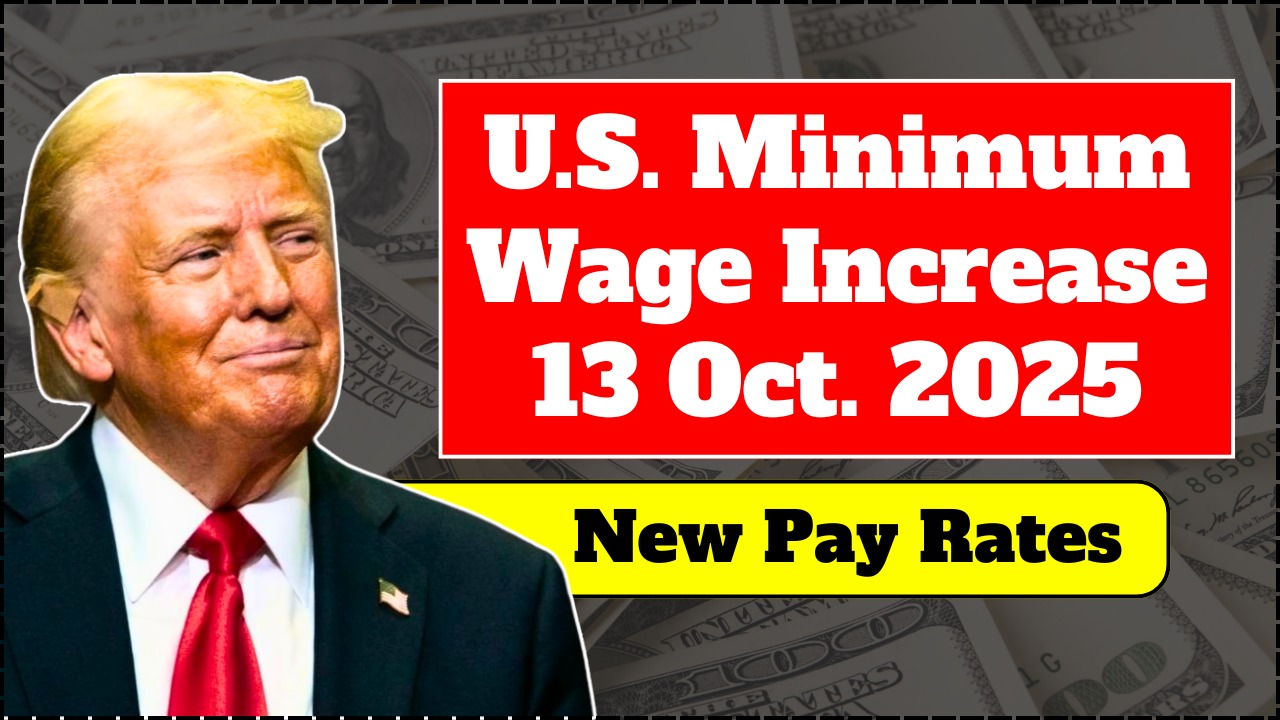Starting October 12, 2025, millions of workers across the United States will begin receiving higher pay as the new federal minimum wage of $12.50 per hour officially takes effect. This long-awaited adjustment, announced earlier this year, is part of the federal government’s ongoing efforts to address income inequality and help Americans manage the rising cost of living.
Although a 50-cent increase from the previous $12.00 per hour may seem modest, it represents an important step forward for workers in industries such as retail, hospitality, food service, and healthcare, where wages have lagged behind inflation. This move also reflects Washington’s acknowledgment that the national wage floor must keep pace with the steadily increasing living expenses of recent years.
The New Federal Minimum Wage: $12.50 per Hour
After years of stagnant pay and growing calls for reform, the U.S. Department of Labor approved a nationwide wage increase under the Fair Labor Standards Act (FLSA). The change raises the federal minimum wage from $12.00 to $12.50 per hour, effective October 8, 2025, with full implementation expected by October 12.
The new rate applies to all federal employees, contractors, and private-sector workers covered under federal labor laws.
| Aspect | Details |
|---|---|
| Effective Date | October 8, 2025 |
| New Federal Minimum Wage | $12.50 per hour |
| Previous Rate | $12.00 per hour |
| Workers Affected | Federal employees, contractors, FLSA-covered private workers |
| Impact Expected | Increased earnings and consumer spending power |
State and Local Wage Adjustments
While this federal increase sets a national standard, several states and cities already have higher wage requirements. For instance:
- California, Washington, Massachusetts, and New York maintain minimum wages between $15 and $17 per hour, depending on the region.
- Oregon, Colorado, and Florida will also implement inflation-adjusted wage increases this October.
The new federal wage will primarily benefit workers in areas where state or local laws have not yet raised pay levels—especially across parts of the Midwest and Southern United States, where millions still earn close to the federal minimum.
Why the Wage Increase Was Necessary
For more than a decade, wages have failed to keep up with the rising cost of living. The Bureau of Labor Statistics (BLS) reports that since 2020, the average cost of groceries has climbed by nearly 25%, while housing expenses have risen about 18% nationwide.
The new $12.50 minimum wage is designed to:
- Reduce financial stress for low-income families
- Encourage workforce participation and reduce employee turnover
- Boost spending on local goods and services
- Narrow the income gap across economic classes
As Labor Secretary Julie Su stated during an early October press conference, “Raising the wage floor not only helps workers but strengthens communities, supports small businesses, and keeps the economy resilient.”
Effects on Employers and the Job Market
All businesses covered by federal labor laws must update their payroll systems by October 8, 2025. While large corporations already meet or exceed this rate, small and medium-sized businesses, especially in low-cost regions, may feel the adjustment more sharply.
Employers are encouraged to:
- Review and update wage structures promptly
- Check both federal and local minimum wage requirements
- Communicate upcoming changes clearly to staff
- Prepare for slight payroll increases in labor-heavy industries
Despite initial concerns from small business owners, economists predict minimal job loss. Historical data shows that moderate wage increases tend to stimulate local economies by enhancing purchasing power and consumer demand.
What the Wage Increase Means for Workers
For full-time workers, this 50-cent hourly raise adds up over time. A person earning $12.00 per hour currently makes around $24,960 per year before taxes. At $12.50 per hour, their annual earnings will rise to approximately $26,000 — an extra $1,040 annually.
While it may not sound life-changing, this additional income can cover:
- Two months of utility bills
- One month’s rent in smaller cities
- Annual prescription or healthcare costs
- Transportation or school expenses for children
For workers living paycheck to paycheck, this modest raise offers real relief and a bit of financial breathing room.
Broader Benefits
Economists believe this federal wage adjustment will deliver positive ripple effects nationwide. Increased earnings mean more spending at local businesses, more stability for families, and reduced reliance on credit or government aid programs.
The U.S. government’s data-driven wage policy reflects a balance between economic growth and social responsibility. By ensuring fair pay, it hopes to reduce inequality, support small enterprises, and sustain economic momentum across regions still recovering from inflation and post-pandemic challenges.
FAQs
Q1. When will the new $12.50 hourly wage take effect?
It officially takes effect nationwide starting October 12, 2025.
Q2. Who is covered under the new federal minimum wage?
All workers under the Fair Labor Standards Act (FLSA), including federal employees and private-sector workers.
Q3. Will the wage increase impact state-level rates?
Only in states where the federal minimum exceeds the local rate; higher state minimums remain unchanged.





